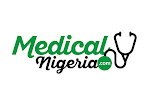Location: Maiduguri
Reports to: Senior Food Security Officer, Assistant Project Manager & Project Manager
Reports to: Senior Food Security Officer, Assistant Project Manager & Project Manager
Aim/Objective of Position
- The overall aim of the position is to assist the Food Security Manager(s) and the Senior Officer(s) to develop, coordinate and manage a timely and effective food security assistance project in line with proposals, strategies and donor requirements.
Specific objectives of the position include;
- the identification, referral and follow up of individuals (children, pregnant and lactating women) who are at risk of malnutrition and other complications;
- coordinate with other DRC teams, actors and stakeholders to ensure malnutrition and related issues are flagged for immediate action;
- support food distribution activities, particularly in BSFP, to ensure target groups receive timely and sufficient support.
Employees under the responsibility of the position:
- Outreach Workers
- Other staff associated with or engaged in Nutrition or Outreach activities
- Professional travel: Yes, to all areas of operation and potential start up locations.
Duties and Responsibilities
Under the supervision of the Senior Food Security Officer, the holder of this position shall perform the following duties:
Programme Implementation:
Under the supervision of the Senior Food Security Officer, the holder of this position shall perform the following duties:
Programme Implementation:
- Assist the PM to manage, train and develop the Food/Nutrition Distribution team on nutrition screening and distribution.
- Supervise Outreach Officers and Outreach Workers.
- Conduct training and sensitisation activities related to food distributions and nutrition.
- Plan, supervise and monitor training, awareness and sensitisation activities, including maintenance and verification of all supporting documentation and activities (e.g. preand post-tests).
- Maintain records of all activities, in order to complete timely reports for DRC and for external actors, including donors.
- Plan, coordinate and monitor all nutrition-related activities, including screening, referrals and follow up.
- Ensure high technical quality and transparent processes are observed at all times.
- Assist the PM to represent Food/Nutrition distribution project in internal and external forums.
- Assist the PM in project documentation.
- Promote the rights of displaced people and affected populations, and explore and assess new and better ways to provide timely, effective and appropriate assistance.
- Assist in gap analysis, needs assessment, conducting registration, receiving commodities and distributing to beneficiaries in locations adversely affected by the conflict.
- Train DRC team members on key nutrition elements of the response: Using height sticks to identify children in the 6-59 month age group; conducting MUAC screening for children aged 6-59 months as well as Pregnant and Lactating Women; Understanding the signs of under nutrition and appropriate recommendations for follow-up
- Ensuring quality MUAC screening takes place at all team registrations: children are accurately recorded in terms of their nutrition status; Appropriate assistance is provided depending on the screening results (preventative, MAM and SAM treatment referrals or on the spot assistance)
- Ensuring appropriate implementation of Blanket Supplementary Feeding Programme (BSFP) for children 659 months: Appropriate messaging to beneficiaries and community (e.g. importance of exclusive breastfeeding), Referral to treatment programmes as and when necessary
- Ensuring appropriate implementation of targeted supplementary feeding programme (TSFP) for children 659 months and PLW (where relevant): ensure screening results lead to appropriate treatment programmes (stabilization centres, SAM or MAM treatment); In cases where services are not available, ensure appropriate assistance/treatment through the distribution teams, with adequate beneficiary communication and information on the use of the nutrition products and the need to follow up with a health facility; Identify opportunities for follow up of individual cases during subsequent rounds of distribution
- Ensuring team members are aware of the DRC and UN/WFP Code of Conduct (CoC)
- Ensuring all team members are aware of the Do’s and Don’ts when undertaking the distributions e.g. respect cultural norms; Do No Harm; Confidentiality; Impartiality; Gender sensitivity; Field appropriate behaviour.
- Ensure operational linkages with other UN Agency and NGO partners involved in integrated missions
- Ensure adequate reporting of screening results and disaggregation of data by nutrition intervention at each site.
- Represent DRC with WFP nutrition unit and with the Nutrition Working Group.
- Other responsibilities as required by line management.
Key Requirements
- Relevant higher education at college level in nutrition and/or health.
- Experience working as a Nutrition Officer in a humanitarian/recovery context
- Minimum 2 years work experience in a humanitarian/recovery context within Nutrition programmes, preferably with an international NGO.
- Proven experience of registration, verification and distribution in emergency relief operations is a strong advantage
- Computer skills (primarily MS Office applications), especially Microsoft Excel.
- Knowledge of the context in rural Nigeria
- Strong understanding of protection principles and likely protection concerns arising in the Nigerian context as well as conflict sensitivity
- Solid experience in staff management in a cross-cultural environment required
- Experience in complex emergencies and the ability to live and work in a very remote environment.
- Ability to work under pressure and without daily supervision
- Fluency in English, both written and verbal. Fluency in Hausa. Competency in Kanuri and/or other local languages appropriate to the target population.
Reporting:
- Prepare and share workplan with line managers and team members.
- Prepare weekly and monthly reports.
- Provide the line managers with relevant documents, and channel issues.
- Communicate, exchange information and co-operate with relevant internal teams
How to apply:

Comments
Post a Comment
Premium, Professional CV Revamp and Rewrite services with a FREE Cover Letter from MedicalNigeria at #3,500! WhatsApp- 07038844295 to get Started!